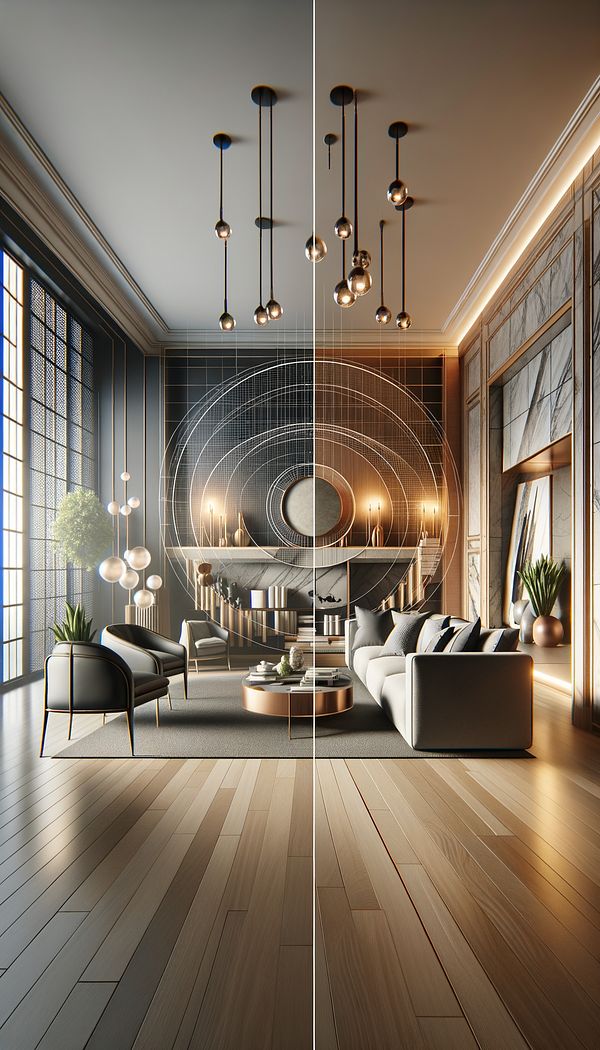What is a Lap?
In interior design, 'lap' refers to the overlap of two materials or elements.
Description
The term 'lap' in interior design predominantly relates to the way in which two materials or elements come together by partially overlapping one another. This can be applicable in various contexts, such as flooring, wall coverings, textiles, and even in the construction of furniture. Lapping is often used as a method to create a seamless transition between two areas or materials, enhancing the overall cohesion and visual appeal of a space.
One common use of lapping is in the installation of hardwood or laminate flooring, where individual planks overlap at the ends to ensure a snug fit and continuous surface. In wall treatments, wallpaper or tiles might lap over edges to create clean, finished borders. Additionally, in the realm of textiles, fabrics may be lapped in the creation of curtains, upholstery, or clothing items designed for interior spaces to add depth, texture, or visual interest.
Lapping requires a thoughtful approach to design, as the overlapping elements must come together in a way that is both aesthetically pleasing and functionally sound. The technique can also introduce an element of craftsmanship, suggesting careful attention to detail and a commitment to quality in the execution of a design project.
Usage
A designer might choose lap joints when constructing a bookcase, ensuring the shelves seamlessly integrate with the sides of the case. In another example, an interior designer might overlap vinyl flooring tiles at their edges for a smoother transition, or lap curtains over one another to achieve a fuller, more luxurious window treatment.
FAQs
-
Is lapping only used for materials like wood and fabric?
No, lapping can be applied to a broad range of materials including metals, plastics, textiles, and even digital elements in design renderings.
-
Does lapping always imply a physical overlap of materials?
Primarily, yes, it refers to a physical overlap, but the concept can also be visually implied in patterns and textures in interior design.
-
Can lapping affect the durability of a design element?
Yes, if done correctly, lapping can actually enhance the durability by creating a tighter bond or seam between materials, but improper lapping might lead to vulnerabilities.
Practical Application
When considering lapping in your design project, it's important to take into account the materials you're working with and their properties. For example, materials with different expansion rates might not be suitable for lapping due to potential warping or gaps forming over time. Also, consider the visual impact of the lap - ensure it contributes positively to the overall aesthetic of the space. As a practical tip, always test your lapping technique on a small scale before fully implementing it to gauge its effectiveness and appearance.
-
Architectural Elements199 articles
-
Fabrication & Craftsmanship133 articles
-
Wall & Ceiling Treatments35 articles
-
Materials & Textiles360 articles
-
Textiles & Upholstery252 articles
-
Gallery RailA gallery rail is a type of railing or molding designed to display artwork or decorative objects.
-
EmbossedEmbossed refers to a surface decorated with a raised or recessed design.
-
Tertiary ColorA color created by mixing one primary color with one secondary color.
-
Bed SkirtA bed skirt is a decorative fabric panel that hangs between the mattress and the floor.
-
Chaise LoungeA chaise lounge is an upholstered sofa in the shape of a chair that is long enough to support the legs.
